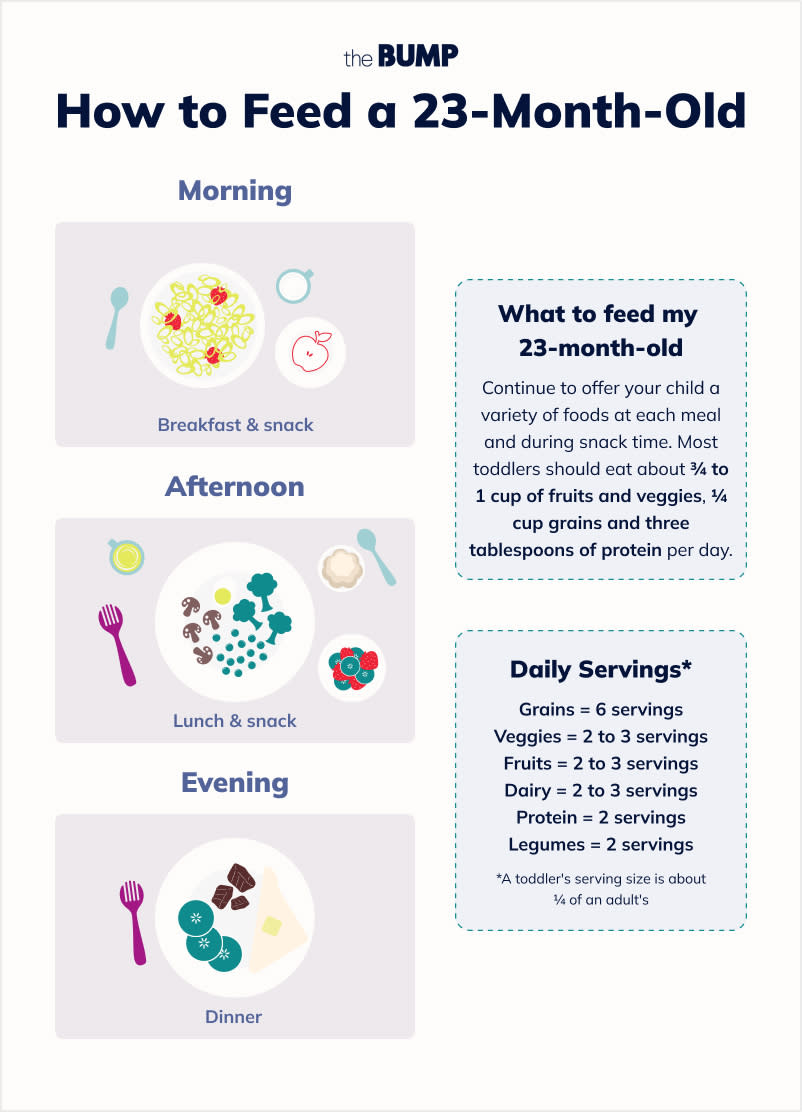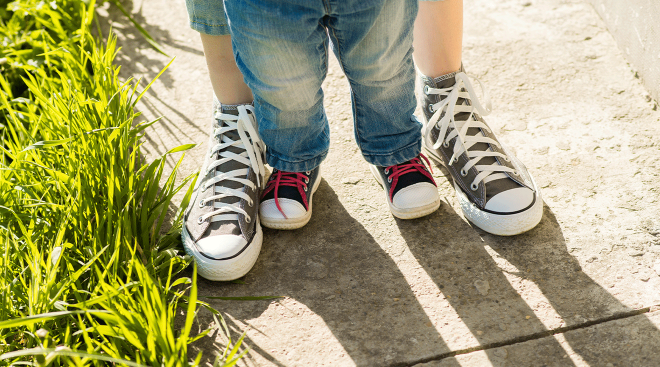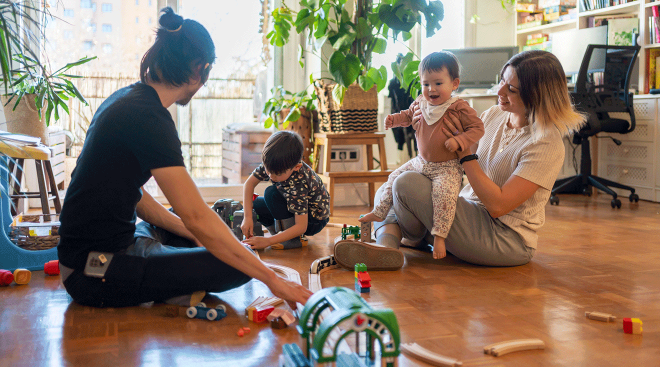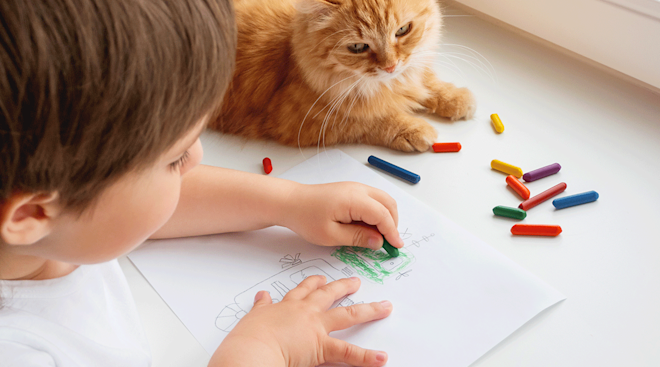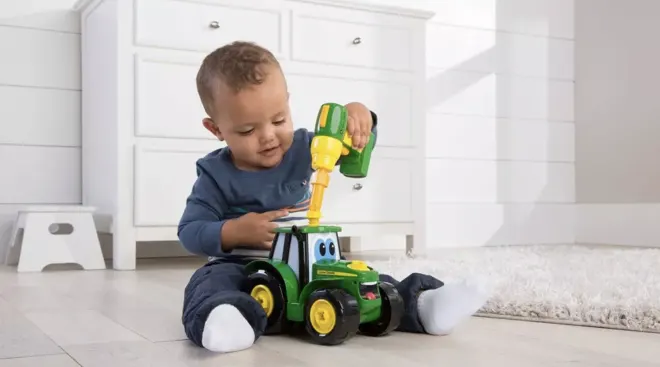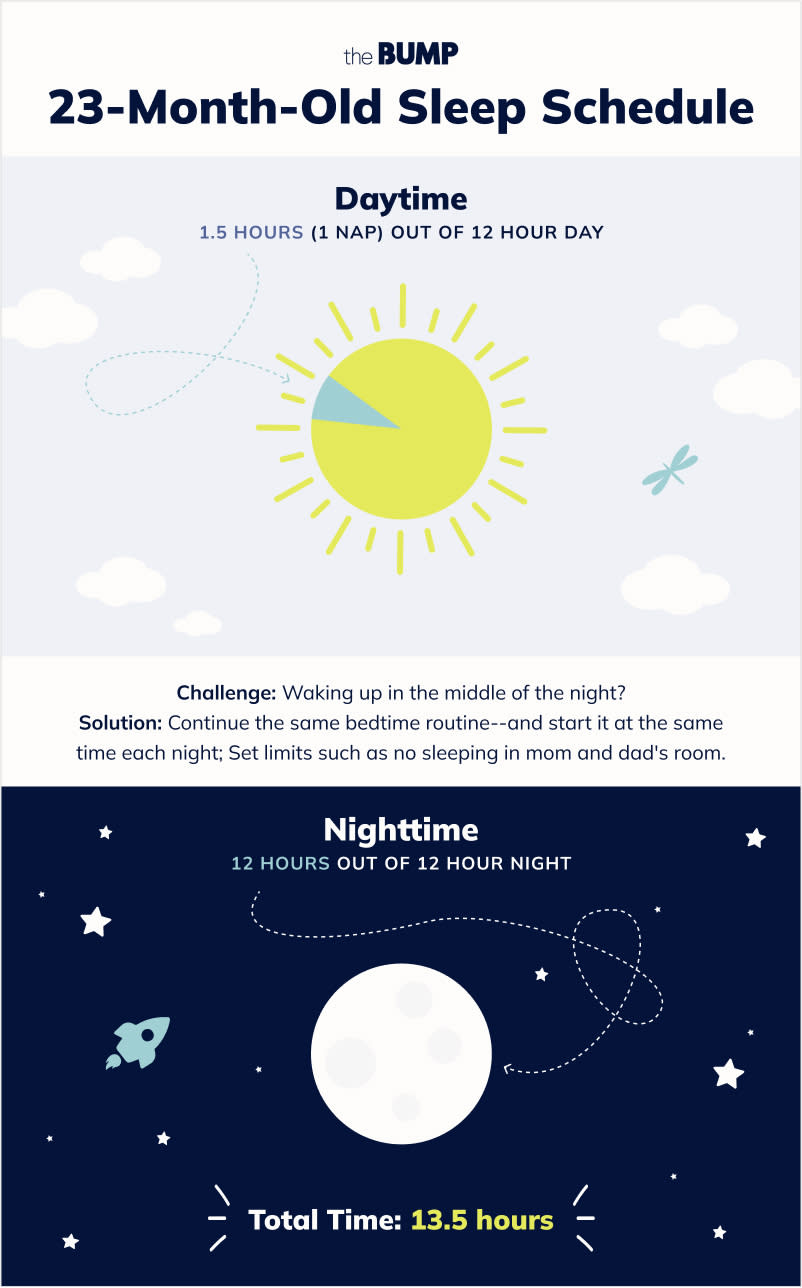Toddlers are notoriously resistant to change. If changes (like a new caregiver or even just a new sippy cup) are stressing your 23-month-old out, maintain stability in other parts of their life and offer support and understanding.
You may be wondering when your 23-month-old will stop asking to hear songs again that you just played for the five billionth time. It’s annoying, yes—but toddlers actually learn through repetition, so embrace this phase as they’re processing new experiences and information.
Your child is making physical and verbal leaps and bounds, and you're probably astonished by the progress they’ve made. A year ago, your little one was a squishy baby attached to your hip. These days, your 23-month-old has grown taller, probably leaned out a lot (oh, how we miss those baby rolls!) and is much more verbal and active.
23-month-old weight and height
Average weight of a 23-month-old is 25.9 pounds for girls and 26.3 pounds for boys. Average height of a 23-month-old is 33.7 inches for girls and 34.2 inches for boys. However, as long as your 23-month-old is where they should be on the growth chart your pediatrician uses to track your 23-month-old baby’s growth, they’re growing just as they should.
23-month-old milestones
The 23-month-old milestones can be quite exciting, and you’ll start to notice that your 23-month-old baby is working on some significant growth and skills. Here are some milestones your 23-month-old may have hit or may be working on:
- Motor skills. Your 23-month-old might be kicking a ball, walking backwards, and may even be able to balance on one foot while holding onto a sturdy chair or wall. Soon, they might be able to pedal a tricycle.
- Speech. At 23 months old, baby might say around 50 words. They’re probably working on making sentences of two to three words.
- Teething. Your toddler's lower second molars and/or upper second molars might be erupting, causing some teething discomfort. Unfortunately, this may not be one of your favorite 23-month-old milestones, and your little one may need some extra snuggles.
- Potty training. Some 23-month-olds show signs of potty training readiness. It's okay to start if you feel they’re prepared. But beware of putting pressure on your kid to potty train—it's still early.
What should a 23-month-old be doing?
Expect your 23-month-old baby to be exploring and practicing new skills. You may notice a new interest in practicing climbing up and down stairs, drawing with lines and circular scribbles or playing with other children. You should also be able to understand almost half of what your 23-month-old says to you.
23-month-old behavior
You’ll start to notice changes in your 23-month-old baby’s behavior—some of these changes are exciting, while others are a little more challenging. As your child gets older, here’s some advice on how to deal with new behaviors:
- Tantrums. Get ready for the terrible twos. It's normal for a 23-month-old to completely lose control over their emotions—especially when they’re tired or hungry. So keep your toddler well-rested and well-fed. When a tantrum starts, try to stay calm, help them identify their feelings and use the art of redirection when you can.
- Autism. At the upcoming two-year checkup, your child's pediatrician will likely ask you a series of questions about your child's behavior to look for signs of autism. Bring up anything you think may be atypical. (The official screening happens at 18 months.)
- Separation anxiety. Your child is probably starting to figure out that if they throw a fit, you might not leave. As hard as it is, gently show them that their tears aren't going to change the routine. Keep goodbyes short and sweet, and reassure your toddler that you'll be back—and be specific with the details. For example, “I’ll be back after your nap.”
- Seeking approval. Soon your child will show signs that they’re aware of your approval (or disapproval). This is an important early step in learning positive behaviors.
Why is my 23-month-old so clingy?
Separation anxiety is very common at this age. A 23-month-old baby has a vivid imagination, which can make things feel very exciting or very scary. Practice providing consistent reassurance when leaving your 23-month-old in someone else’s care by saying, “I’m going to go to the store, but I always come back!” When you return, remind your little one, “See? I came back!” If clinginess has become a real struggle, you can even practice this wording when going into another room. With reassurance, the separation anxiety will improve.
Health is always a top concern for parents, and this age is no different. Some common health questions parents of 23-month-olds have include:
- My 23-month-old has diarrhea. What should I do?
- My 23-month-old is constipated. What should I do?
- My 23-month-old is throwing up. What should I do?
- My 23-month-old has a fever. What should I do?
When feeding a 23-month-old, curb your expectations. They're not likely to eat nearly as much as older family members, and they might seem to love a food one day, then totally reject it the next. You might also notice that your 23-month-old baby only seems to want one food for a period of time. (Remember how we said toddlers this age love repetition?) This is also quite common, but it’s helpful to continue to offer a healthy variety of food to your tot anyway.
How much should my 23-month-old eat?
One- to 2-year-olds should be eating much like you do: Three or four meals per day, plus two snacks. Offer them a variety of foods in all food groups—vegetables, fruits, grains, protein and dairy—daily.
A serving of pasta the size of a Ping-Pong ball, protein as big as four to five marbles, and chopped veggies or fruit around the size of four dominoes are all considered normal portions for a toddler this age.
How much milk should a 23-month-old baby drink?
One of the biggest 23-month-old milestones is moving away from drinking large amounts of milk. While milk is still important for calcium and vitamin D, too much can keep a 23-month-old baby from eating a nutritionally balanced diet. The focus should be more on healthy foods than milk, so limit milk to about 2 to 3 cups (or 16 to 24 oz.) per day.
What to feed my 23-month-old
Continue to offer your child a variety of foods at each meal and snack. Most toddlers should eat about ¾ to 1 cup of fruits and veggies, 1.5 cups of grains and four tablespoons of protein per day.
Looking for some tasty and nutritious meal inspiration? Check out these food ideas for a 23-month-old:
23-month-old feeding schedule
23-month-old won’t eat
Got a picky eater? Most toddlers do get proper nutrition when their parents serve a variety of foods—even if it doesn’t always seem that way. But, unlike adults who often eat out of habit or boredom, toddlers tend to eat only when they’re hungry. And remember: New foods are scary to your toddler. So manage your expectations; it may take inspecting new foods several times before they’ll actually taste them. Don’t force it, but continue trying, so they get used to sampling different flavors.
Whether your child loves or hates bedtime, you probably have questions about what's typical when it comes to sleep for a 23-month-old—and what to do when there are hiccups in the usual sleep routine.
How much sleep does a 23-month-old need?
Most 23-month-olds need around 11 to 12 hours of nighttime sleep, plus a nap of about 1.5 to 3 hours, for a total of about 13 to 14 hours of sleep per day.
23-month-old sleep schedule
Every kid is different, but your child's schedule may look something like this:
23-month-old sleep regression
Is your 23-month-old waking up at night? Sleep regression can happen because of teething, separation anxiety or a change in sleep routine. To get back to the usual snoozing routine, it's important to know the root of the problem, so you can help your child get through it. Stick with the usual bedtime routine and set limits (such as no sleeping in your room) that will help your child get back on track.
Now that your tot is steady on their feet, there are lots of ways to have fun and stay active together. Looking for things to do with a 23-month-old? Some fun activities, games and toys for a 23-month-old include:
- Walking games. A game, like “Let’s try not to step on the cracks,” can keep your toddler on their own two feet when you’re out and about without the stroller.
- Pull toys. Your child is walking more smoothly than they did months ago and is probably ready to pull a wagon or a wheeled toy with a handle.
- Tricycle or balance bike. Look for a trike, bike or scooter built for a 2-year-old, so your child can learn to pedal or scoot. Make sure your 23-month-old always wears a helmet on any ride!
- Plan your child's second birthday party and send out invitations.
- Time for a third (or fourth) round of childproofing, now that your kid is an experienced climber and more thorough explorer.
- Keep a quote book. Now that your child is saying sentences, you'll want to write down the funniest and smartest lines as a sweet memento of the toddler years.
- Serve plenty of iron-rich foods to your 23-month-old to ensure they get the iron they need. Foods like tofu, poultry, meat, fish, beans and enriched grains are great choices. Double-up the nutritional benefit by serving iron-rich foods and options high in vitamin C, which helps bodies absorb iron better. Tomatoes, broccoli, oranges and strawberries are all excellent sources of vitamin C.
Make a list of any questions you might have about 23-month-old milestones, behaviors or eating and sleeping habits to bring with you to your child’s 24-month pediatrician checkup. If you have any concerns about developmental delays, make sure you bring them up during the appointment.
Please note: The Bump and the materials and information it contains are not intended to, and do not constitute, medical or other health advice or diagnosis and should not be used as such. You should always consult with a qualified physician or health professional about your specific circumstances.
Navigate forward to interact with the calendar and select a date. Press the question mark key to get the keyboard shortcuts for changing dates.


































